Cooking Fanesca With My Cuenca Neighbor
As most of you here well know – I’m not the least bit shy when it comes to strangers in my travels. Indeed, though I’m actually quite an introvert (which has nothing at all to do with shyness) – to me, strangers (even, and especially strangers that don’t happen to speak English) are simply friends I’ve yet to meet. And so it was that I found myself peeling cooked “chocho” beans last week, in the steamy kitchen of my neighborhood “tamale” lass that sells them (.60 each) daily out of a big aluminum pot in her doorway, just down the street.
The Backstory:
This past week (Semana Santa/Easter Week) is the ONLY time of year when locals here in Cuenca make and serve the traditional “fanesca” soup. It’s quite the labor-intensive recipe as it requires 12 different legumes/grains (representing the 12 apostles) as well as “bacalao seco” (dried salt cod) cooked in milk (representing Christ).
I first tasted fanesca soup last year (and l.o.v.e.d. it) and I was looking forward to slurping a bowl or three this Easter season. But then, as I was strolling past my neighbor’s tamale cubby on Tuesday afternoon, I suddenly had an idea…
 I turned to her and asked (in my faltering Spanish) “Do you know how to make fanesca?”
I turned to her and asked (in my faltering Spanish) “Do you know how to make fanesca?”
And she replied “Claro!” (Of course!) “But I don’t make it until next Thursday.”
“Would you show me how to make it?” says I.
“Claro!” replied she!
I then asked her if I could get her any of the ingredients she needed and she said that on Thursday morning we could go together to shop for all the ingredients.
Needless to say – I couldn’t WAIT until Thursday to shop with her and help her make homemade FANESCA!
Shopping for the Fanesca Ingredients:
So early Thursday morning we both trudged about 5 blocks to a special outdoor market brimming with all the ingredients for this revered traditional Santa Semana soup. Pinching each bean and sniffing each crusty dried fish, Olga swiftly filled her shopping bag (with this gringa tagging along behind snapping photos left and right:
Back at the Concina (Kitchen):
Loaded down with a good 50+ pounds (seriously) of fanesca ingredients, we headed back to Olga’s kitchen (just a few doors down from my El Centro apartment). We didn’t get far however, when we met her “esposo” (husband) Edgar, who’d kindly walked up to help us carry the load.
It seemed like an awful lot of food even for Olga’s large family, so I asked her how many people she was cooking fanesca for and she replied “Setenta”. WOA! *70* people! I didn’t realize that she was planning on selling bowls of fanesca as an option for her “almuerzo” lunch customers that afternoon. Needless to say we were going to rustle up a BIG POT of fanesca that morning.
And so we did:
For the next 3 hours Olga’s friend Rosa helped with all the cooking and cleaning up, as various ‘n sundry children (ranging from 15 yrs. down to 2 yrs. old) darted in and out of the tiny kitchen grabbing a bite of breakfast and prepping for school. Meanwhile, Edgar and I happily watched a television game show (in Spanish) whilst diligently shelling cooked lupin beans, chopping veggies, etc.
Later, Rosa made a batch of ají de tomate de árbol (a delicious salsa made from tamarillo fruit) and squeezed dozens of fresh passion fruit for the “jugo” (juice) to serve with the almuerzos.
And the gringa’s job? I was honored to be in charge of stirring, and stirring, and stirring the simmering fanesca!
Needless to say, it was quite a remarkable experience to be a small part of this centuries-old Semana Santa culinary tradition. And while I didn’t note each and every handful of beans and pinch of spice that Olga tossed into the fanesca pot – should you like to try cooking up some of this delectable soup yourself, I did include a link to a fanesca recipe in last year’s fanesca post: “In Search of Fanesca”
And finally – a special portrait of my new Cuencano friends – the happy cooks: Olga, Edgar, and Rosa.
Then you might want to subscribe to my email list so you’re sure to catch my next one.
(trust that I’ll not clog your precious inbox – I generally only post but once a week.)

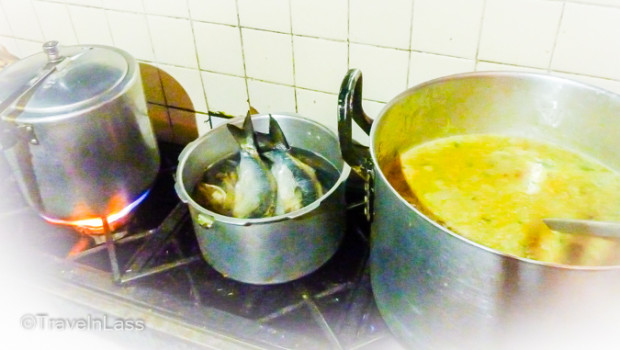
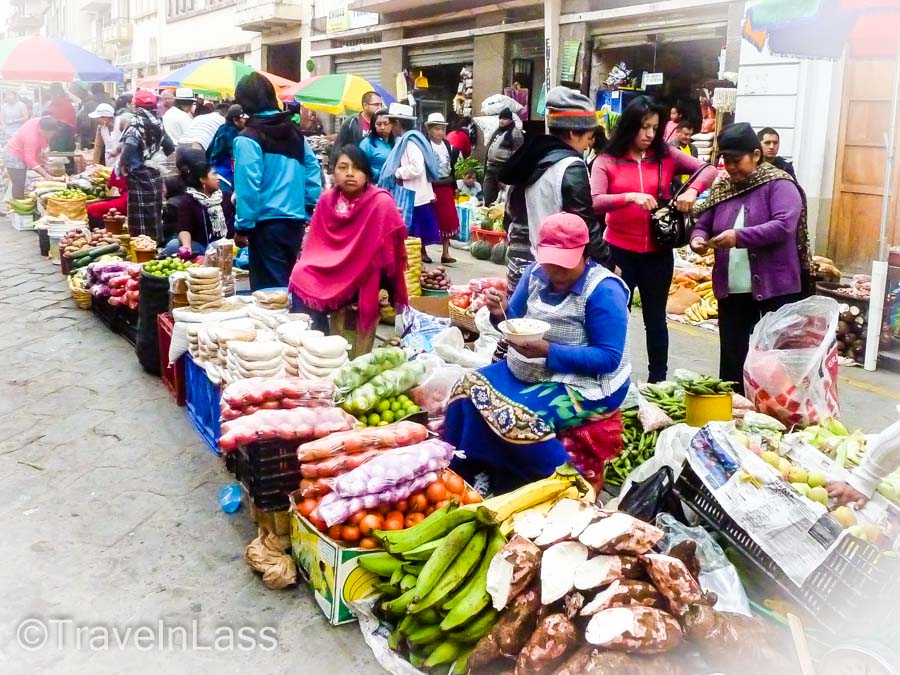

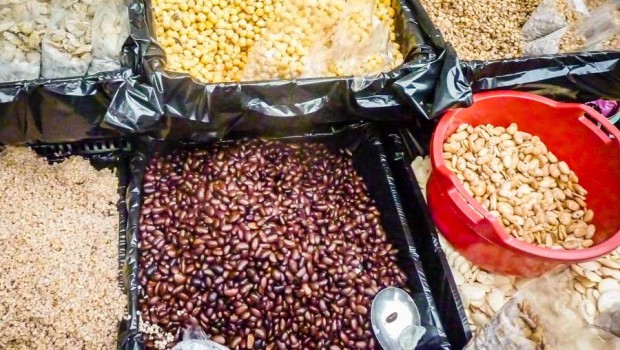
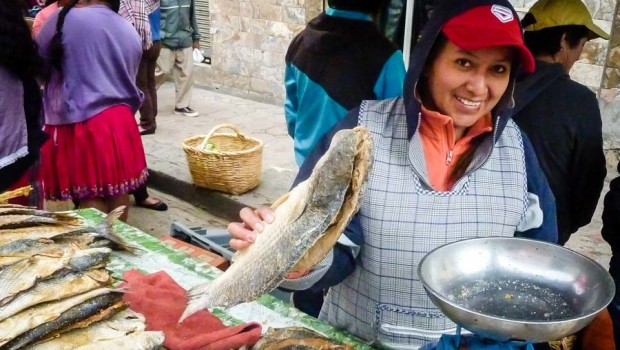
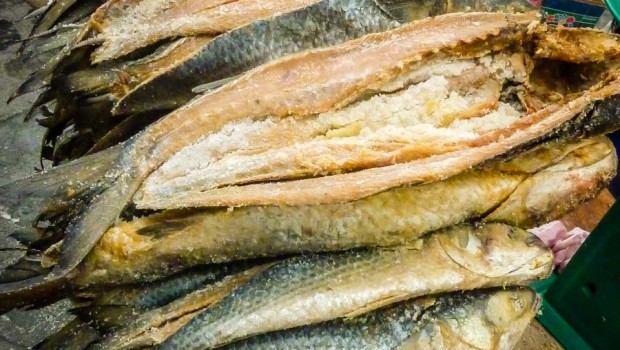





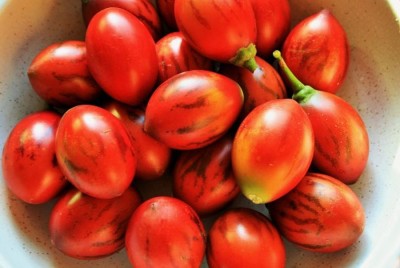
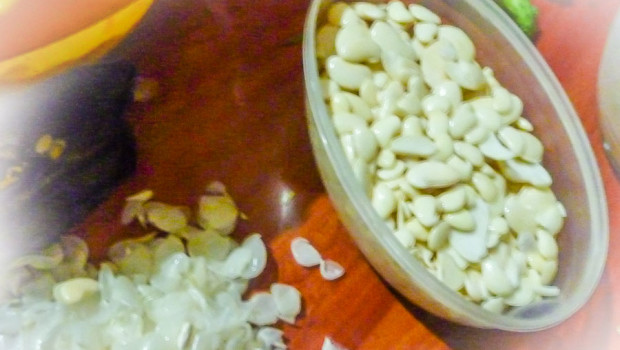







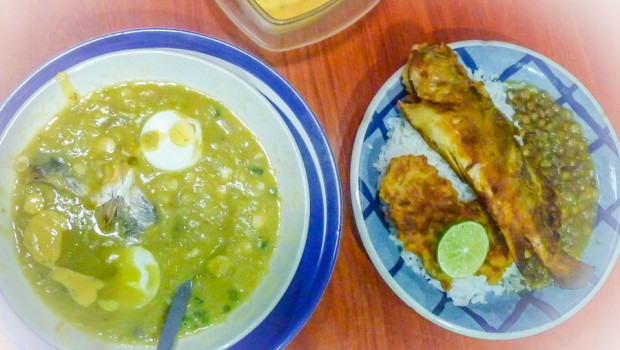


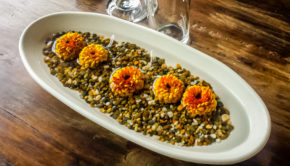


 Off-the-beaten-path travel is my passion, and I’ve always lived life “like a kid in a candy store” – eager to sample as many flavors as I can. Indeed, my life motto has long been:
Off-the-beaten-path travel is my passion, and I’ve always lived life “like a kid in a candy store” – eager to sample as many flavors as I can. Indeed, my life motto has long been:










What a great experience! How many bowls of it did you eat in the end?
lol James – well just the one bowl of fanesca on the cooking day (after all, I also had that fried fish almuerzo to eat, yes?) But as this year some of the Cuenca restaurants started offering the soup throughout Easter week – suffice, I made a point of slurping down at least 3 bowls of it!
Your so great account of making fanesca reminds me of me looking for fanesca in the restaurants of Puerto Lopez four years ago.,Finally, one owner got her son to accompany me to another restaurant where they were serving this special dish.
Yes, it truly was a most fun (and privileged) experience being able to help cook this centuries-old traditional soup, Valerie. Thanks for sharing your story of likewise tracking a bowl of it down in Puerto Lopez..